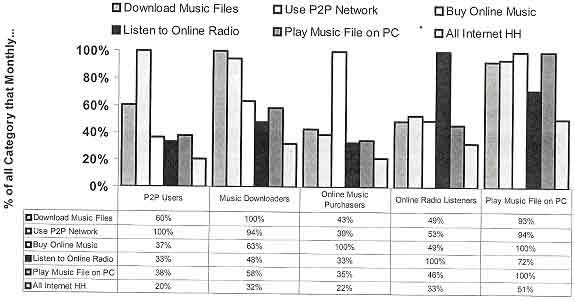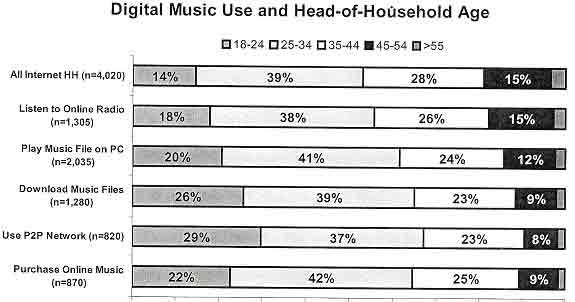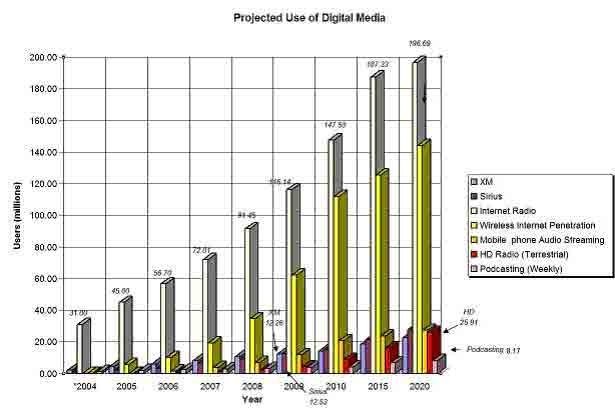Table of Contents
- Executive Summary
- Capability
- Market analysis
- Product extension
- Market trends
- Conclusion
This has to be an IM
Executive Summary
Today, audio media is an integral and crucial component of every company. Decent audio input may make or break a commercial enterprise. Audio media includes televisions, radios, CD players, cassette players, MP3 players, cell phones, rotary phones, intercom systems, and even the internet. The need for audio equipment is well-established in today’s culture. This is unquestionably correct. However, analog transmissions through point-to-point networks are still the most popular technique of delivering audio. Despite the fact that digital distribution has apparent benefits over analog, it has failed to fully permeate the market. However, there is a shift taking place. Much of today’s audio equipment is digital on the inside. In the previous half-decade, the advancement of digital technology has had a huge impact on how people interact. A digital audio networking technology is about to hit the market.
Capability
The ability to pick up or send numerous audio signals over a single link is one of the many benefits of digital communications over analog ones. Digital signals are also less susceptible to attenuation and noise, and numerous A/D and D/A conversions may be avoided, resulting in less deterioration and delay. In the digital world, audio delivery, processing, and even mixing may all be done.
Despite these benefits, however, digital distribution has not gained the traction that investors had hoped for. Unfortunately, the main reason for the lack of popularity and poor sales rates is that the digital goods available so far have been labeled as proprietary and inflexible.
A realistic product to present to the market at this time – to eliminate this digital resistance – is one that is revolutionary in the realm of digital audio networking technology. A product that is compatible with standard internet protocols, not only Ethernets, will achieve a level of market penetration never before seen in the industry, and, most importantly, it will open the doors and pave the way for digital technology to reach its full potential; a product that connects all of the benefits of digital audio technology and makes them accessible.
Market Analysis
Despite the fact that market research data on digital audio consumption in Australia is few, it is possible to use the situation in the United States as a case study for comparing the situation in Australia. Sirius Satellite Radio is one of the most revealing illustrations of the dilemma surrounding digital media in the United States.
Bridge Ratings (2006), a market research firm located in the United States, predicted that weekly listenership for analog radio will decline from over 95% now to 70% by 2020. This is a sign that the need for digital technologies is increasing.
Bridge Ratings predicted that satellite radio will reach over 34 million consumers by 2010 and 60 million by 2020 in their 2006 assessment. The satellite radio/digital radio concept, on the other hand, would have to change its existing state of extremely low market penetration as a requirement of this. By the end of the year, the market penetration was anticipated to be at 555,000, with best efforts to increase HD to over 20 million in 2010 and 46 million by 2020.
Evidence that the emergence of HD radio virtually coincided with the expansion of Internet radio was another aspect of the issue. Unlike digital audio and its transmission on satellite radio, Internet radio is very popular. It will also benefit substantially from widespread Wi-Max, or Wide Area Wireless Access, which, by 2008, will bring Internet Radio to portable devices, including car radios.
For young Americans, Internet radio streaming is already the favored means of audio listening. Its popularity is only going to rise as more people have access to broadband internet.

The gradual expansion of High Definition terrestrial radio (HD) may also benefit from new free channels and the improvement of its analog offering, since Internet radio is already the dominant medium over satellite radio and conventional radio (Bridge Ratings, 2006).
However, a viable means of combining digital audio technology with internet radio and other such popular features is certainly available. The bottom line: there is a viable potential to tap the market of listeners in Australia and even around the world by providing a means of accessing quality digital audio sound via a variety of digital audio equipment in combination with providing viable services, such as internet radio content, that will force prospects to try digital audio.
This market research establishes the fact that there will be a definite need for digital audio transfer technology in near future. As more and more forms of audio media will be in demand, the need for marketing the technology will have a ready market.
You keep going, but where is the IM focus?
Development Plan
There is an existing and increasing audio market: Internet radio streaming is currently the preferred source of supplementary audio entertainment among young Australians, and it is continue to rise as broadband technology penetration increases fast throughout the nation. Although, as in the United States, podcasting is growing at a slower rate than expected, it remains a popular form of audio communication. What’s being seen is that the early adopter and innovator population is backing away from podcasting. A number of consumer groups have allegedly reduced their podcast use and are listening to fewer podcasts in a normal month.
Part Two of the File

The point point is that Internet radio is swiftly overtaking satellite radio and conventional radio as the favored medium among 15-30 year old early adopters. The best way to develop interest and build a positive sales level for digital audio products is to find a viable means of providing digital audio equipment that will compliment popular mediums such as Internet radio.

Source: Bridge Ratings, LLC: http://www.bridgeratings.com
Product Extension
With growing demand of audio equipments in various forms, the digital audio distribution technology is expected to have a huge demand. At the same time, with the right range of digital audio equipment placed on the market, digital audio networks will be able to leverage features and functions of digital audio and digital audio control that computer network implementers have had available for years. Products can be developed that are aesthetically pleasing, that have a low cost redundancy, high availability, bandwidth aggregation and even encryption.
Digital media equipment such as that offered by the company DANTE in Australia offers a compelling solution to the problem surrounding digital audio. Techniques such as Zeroconf facilitate easy network set-up so that users can establish connections across the internet using specific digital audio equipment.
This is one built-in, no-hassle feature that will turn digital audio into a successful medium. Targeting the already popular online medium of audio file sharing and communication, such as podcasting and now web phones, a company like DANTE can develop and market products such as speakers, audio recording devices, microphones, headsets, phones, and even radio features that will incorporate digital audio and thus showcase its various advantages over analog, and feed into an audio industry sector that is already thriving. The technology is available to enable equipment via Ethernet switches, power up, set up the audio routing. Appropriate digital audio equipment can be used to make the most of audio over the internet while also make its own advantages known to a wider audience of consumers.
Market Trends
The primary driver driving today’s reappraisal of the nature of media and communications is convergence. It’s most often used to describe the process of dissolving. This bodes well for the future of digital audio technology.
Digitization technologies facilitate technological convergence. This word describes the growing capacity to transport and transform ‘content,’ such as sound, data, picture, or text, into other formats. Broadcasting, telecommunications, computers, and publishing, which were formerly independent sectors of the communications economy, have combined or formed partnerships to cope with and exploit the impacts of technological convergence. The merger of Time Warner and AOL in 2000 is one example of this (Cunningham & Turner, 2002).
However, convergence has a deeper connotation, one that goes beyond this. Trevor Barr (2000: 22–24) uses the term functional convergence to characterize the tight business ties that exist across the three sectors of information technology, media, and telecommunications. Institutional convergence occurs when companies from these industries develop strategic agreements or combine (Barr, 2000).
Foxtel, Australia’s main pay television business, is an example of primary convergence since it is a joint venture between Telstra and News Corp and Publishing and Broadcasting Ltd (PBL), two significant media firms (Cunningham & Turner, 2002).
In the history of media and communications law and policy, there have been three phases of convergence. The first stage, which was based on scarcity, witnessed the emergence of protection, universal service, and public interest. Throughout most of the twentieth century, this stage was seen in motion. The second stage, which is currently drawing to a close, is concerned with plenty, liberalisation, competitiveness, efficiency, and variety.
The third stage will focus on decentralizing communications infrastructure and beginning to integrate media and communications into a larger and more general regulatory framework for the services industry (Pavlik, 1996: 259).
It’s time to rethink how sound is disseminated. As previously said, most of today’s audio equipment is digital on the inside, but when it comes to dissemination, most individuals utilize analog signals through point-to-point networks. There is no compelling reason not to utilize digital to disseminate audio information, and in this era of internet networking, digital audio distribution is tremendously beneficial. People will be able to not only enjoy all of the advantages of higher sound quality compared to analog, but they will also be able to do what they appear to like: exchange audio material with other Internet users and those who carry portable communications devices, thanks to digital audio distributors, which include everything from loudspeakers to microphones.
Digital audio signals are less susceptible to attenuation and noise, as well as the deterioration and delay associated with numerous A/D and D/A conversions, since they may be sent out on a single link. Any firm with the desire may easily gain a market edge with the correct items – digital audio goods that encourage audio sharing over the internet and through portable communication devices, in addition to the traditional means. Despite digital’s broad availability, digital audio capabilities have failed to have a significant impact on the market. With the appropriate idea in place, the possibility to do so exists.
Conclusions
The market analysis and the product capability discussed above show the bright prospects of investing in the digital audio industry.
The market analysis has shown us the upcoming trend of convergence. This will blur the lines between media systems, media content, and the trade that results between them. It is also the latest technology buzz word requiring a logical definition. We can understand it by looking at the activities of a communications company such as Optus that offers services such as TV, telephones, and Internet provision (Cunningham & Turner, 2002). The market no more belongs to single product industries. This is an indicator that digital audio technology will be needed by one and all related to any form of media as they all will be dealing with this technology by default. They will not be able to survive and compete in the market place without embracing this technology.
So far these companies are either not dealing with all kinds of products or the ones who are dealing with anything that may require audio distribution technology, has been using the analog technology. Very soon the advantages of digital technology over the analog system will become widespread. With introduction of easy-to-use products, this will gain a wide acceptability. In times to come the analog system will be totally taken over by the digital system, there is no doubt about this fact. Thus, digital audio technology has a great prospect in very near future.
References
- Audinate (2007). Audinate.com. NSW, Australia
- Barr, T. (2000). newmedia.com. Allen & Unwin, Sydney
- Berryman, B. (1999). ‘Converging Signals: Digital Radio and Program Associated Data’, Media International Australia incorporating Culture and Policy, no 91, May, pp 43–54.
- Bridge Ratings (2007). Bridgeratings.com. Glendale, CA
- Cunningham, S. & Turner, G. (2002). The Media & Communications in Australia. Allen & Unwin. Place of Publication: Crows Nest, N.S.W.
- Emmison, M. (1997). ‘Transformations of Taste: Globalisation, Generational Changes and Australian Cultural Consumption’, Australian and New Zealand Journal of Sociology, vol 33, no 3, pp 321–43.
- Emy, H.V. (1993). Remaking Australia: The State, the Market and Australia’s Future, Allen & Unwin, Sydney.
- Pavlik, J.V. (1996). New Media Technology: Cultural and Commercial Perspectives, Allyn and Bacon, Boston.
- T.Jeffery., S. Stephen, (2003), New Venture Creation Entrepreneurship for the 21st Centuary, 6 EDN., McGraw Hill.
- Nigel., C. Stuart., & J. Robert., (2007) “Operations Management” 5 Edn, Prentice Hall. England.
Brief was:
- An individual assignment will be submitted in report format
Topic:
- Prepare an Information Memorandum on technology, service, or product of your choice for presentation to a seed investor.
- Length: 5 pages max + exec summary
- Due Fri 2 November 2007 1200 (noon) Adelaide time (or before)
